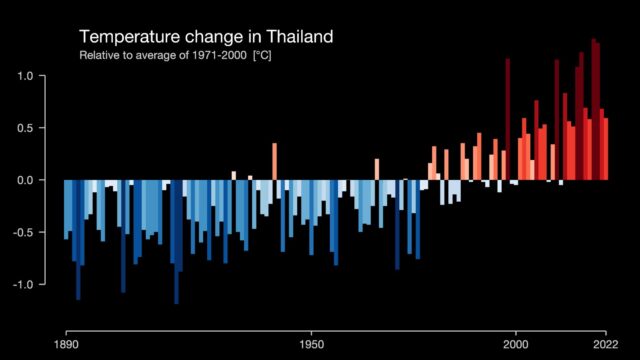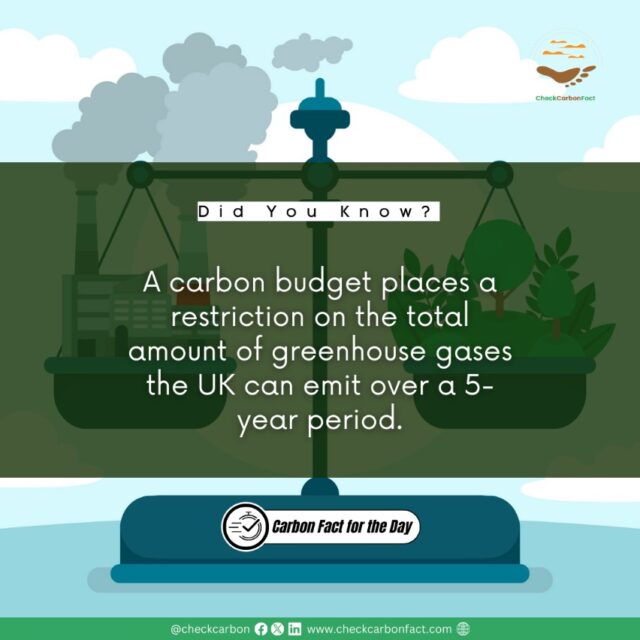Every year, severe weather causes the displacement of tens of millions of people, and long-term droughts and increasing sea levels are making many densely populated areas more inhospitable to human existence. Yet, there is a complicated relationship between migration and climate change. In an effort to understand this complex relationship, the European Union in 2020 launched a ground-raking project called “HABITABLE.” The project is supposed to run for four (4) years (2020 to 2024), bringing together 22 partners from 18 countries, spanning diverse disciplines.
HABITABLE revolves around the concept of habitability and seeks to develop a comprehensive and interdisciplinary understanding of social tipping points. This innovation is meant to analyse how environmental disruptions may catalyse significant social transformations. Additionally, HABITABLE is so far the most extensive research project on climate change and migration ever funded by the European Commission’s Horizon 2020 program.
In this blog, we will put our gaze towards Thailand and glean insight from the findings of the HABITABLE project to understand the intricacies of climate-driven migration in its rural communities.
What is the HABITABLE Project?
The HABITABLE project is a pioneering effort to redefine our understanding of habitability in the context of environmental disruptions and social change. Departing from traditional climate-centric analyses, HABITABLE adopts an interdisciplinary approach that acknowledges the subjective nature of habitability. By integrating perceptions of risk, adaptive capacities, and migration motivations, the project seeks to unravel the complex interplay between environmental factors and human behaviour.
Embracing a systems-based perspective, HABITABLE examines the multifaceted drivers of migration, encompassing social, economic, political, and demographic dimensions. The project is divided into three distinct research domains;
- Web of Casualties
- Adaptation, and
iii. Policies
The HABITABLE project is conducting extensive interviews with rural communities in Sudan, Ethiopia, Ghana, Mali, and Thailand, totalling tens of thousands. This four-year initiative, slated to conclude later this year, aims to greatly enhance our comprehension of the complex relationships between climate change effects, migration, and displacement patterns. The goal is to more accurately predict future developments. By leveraging insights gleaned from this study, the research team endeavours to formulate guidelines and recommendations that can enhance policies’ effectiveness in addressing climate change-induced migration patterns.
In Thailand, the Raks Thai Foundation researchers carried out over 1,000 surveys across a span of months in 2023. They went through 63 farming communities in Chiang Rai and Udon Thani provinces. The project uses a gender and social equality and stakeholder engagement lens to shape effective policy responses to the climate-migration nexus. Through its holistic approach, HABITABLE aims to inform the development of sustainable strategies that address the challenges posed by environmental change while prioritising the well-being of affected populations.
Setting the Context: Thailand
Climate change continues to reshape livelihoods worldwide. Migration patterns are shifting, leaving families separated as parents seek opportunities in urban areas or abroad. In lower and middle-income countries like Thailand, this trend has led to an increase in households where grandparents raise grandchildren while parents chase employment prospects elsewhere.
The Global Climate Risk Index ranked Thailand’s long-term climate risk index as 9th in the world, citing recurring floods, heatwaves, and storms as primary concerns. The devastating impact of events like the 2011 Great Flood serves as a stark reminder of the vulnerability faced by rural communities reliant on agriculture.
Behind the statistics lie the stories of resilience and adaptation of rural Thai communities. Through extensive surveys and interviews conducted as part of the HABITABLE project, researchers gained insights into the lived experiences of farmers in provinces like Chiang Rai and Udon Thani. These communities, deeply intertwined with the land they cultivate, navigate the changing climate with pragmatism and perseverance.
For farmers whose livelihoods hinge on the cultivation of longan fruit, the erratic weather patterns pose a formidable challenge. Despite efforts to nurture their crops, consecutive years of drought have led to dwindling harvests, prompting contemplation about the viability of staying in their ancestral village. The dilemma they face reflects a broader trend observed across rural Thailand, where agricultural practices intersect with the changing climate.

Source: Show your stripes
Climate Change and Migration in Thailand
Thailand, heralded as a “development success story” by the World Bank, grapples with the stark reality of its vulnerability to the impacts of climate change. Ranked as the ninth “most affected” country by the 2021 Global Climate Risk Index, Thailand has witnessed a staggering 146 weather-related events between 2000 and 2019, resulting in significant economic repercussions (about 0.82% loss of GDP). The catastrophic flood of 2011, famously dubbed “the great flood,” swept across northern, northeastern and central Thailand, impacting over 13 million individuals and causing destruction to 20,000 square kilometres of agricultural land. The resulting losses amounted to approximately $46.5 billion, making it the fourth most expensive disaster in history up to that point.
According to a UN report, Thailand’s tropical climate has undergone notable shifts, with average temperatures rising by 0.95°C between 1955 and 2009, exacerbating seasonal stress for farmers. The agriculture sector faces a very significant impact; considering it occupies a cornerstone of the country’s economy, employing a third of the population and contributing over 8% to GDP even though a 2021 report says the sector faces mounting pressures. The decline in local labour willing to engage in agricultural work has led to a growing reliance on migrant workers, particularly from neighbouring countries like Cambodia and Laos. Conversely, Thai nationals seek employment abroad, contributing significantly to the country’s GDP through remittances.
Understanding the Role of Migration
Migration in the context of climate change is not merely a physical movement from one place to another; it embodies a multifaceted response to the evolving environmental and socioeconomic landscape. In rural Thailand, where agriculture forms the backbone of livelihoods, migration serves as both a coping strategy and a consequence of environmental degradation.
For many rural inhabitants, migration represents a means of escaping the adverse impacts of climate change on agricultural productivity. As droughts become more frequent and floods more devastating, farmers are compelled to seek alternative sources of income to sustain their families. The allure of urban centres or overseas destinations beckons, promising better wages and economic security.
However, the decision to migrate is seldom made in isolation. It is influenced by a myriad of factors, including social networks, economic opportunities, and cultural norms. In communities like Juam Krai and Rakstin Thai, where migration has become ingrained in the fabric of life, the phenomenon of “chain migration” is evident. The initial departure of a few individuals paves the way for others to follow, driven by familial ties and the promise of a better life elsewhere.
Yet, alongside the aspirations for a brighter future, migration takes a toll on rural communities. The exodus of working-age individuals leaves behind a demographic imbalance, with the elderly and children comprising a disproportionate share of the population. This “missing middle generation” not only strains social support networks but also undermines the resilience of communities in the face of environmental shocks.
Adapting to Change
In the face of mounting climate challenges, rural communities in Thailand are compelled to adapt their traditional practices to ensure their survival. Adaptation takes on various forms, from technological innovation to shifts in agricultural practices and livelihood diversification.
Technological advancements play a pivotal role in enhancing the resilience of farming communities. Farmers in Huay Nan, for instance, leverage drones and advanced irrigation techniques to optimise crop yields and mitigate the impact of water scarcity. Similarly, the adoption of climate-resilient crop varieties and sustainable farming practices offers a pathway towards greater agricultural productivity in the face of climatic uncertainty.
Moreover, communities are embracing diversification as a means of bolstering their resilience to climate change. Beyond traditional agriculture, households explore alternative sources of income, such as ecotourism, handicrafts, and small-scale enterprises. By diversifying their livelihoods, rural inhabitants reduce their reliance on weather-dependent sectors, thereby enhancing their adaptive capacity in the face of environmental variability.
However, adaptation efforts are not without challenges. Limited access to resources, inadequate infrastructure, and institutional barriers constrain the ability of rural communities to implement adaptive measures effectively. Moreover, the unequal distribution of adaptation benefits exacerbates existing disparities, leaving marginalised groups disproportionately vulnerable to the impacts of climate change.
To attain progress, there is need to foster an inclusive and participatory approach to adaptation. By empowering local communities, building institutional capacity, and promoting knowledge exchange, stakeholders can enhance the adaptive capacity of rural areas and ensure a more equitable and sustainable future for all.
Looking Ahead
The HABITABLE project serves as a hope of insight, illuminating the path towards a more nuanced understanding of climate-driven migration. By amplifying the voices of rural communities and fostering equitable partnerships, it offers a blueprint for addressing the complex challenges posed by climate change. As the project prepares to publish its findings, there is hope that its recommendations will pave the way for policies that prioritise the well-being of those most vulnerable to the impacts of a changing climate.
In conclusion, the journey towards sustainability in rural Thailand is fraught with obstacles, yet it is also marked by resilience, innovation, and the indomitable spirit of its people. Through collaborative efforts and a deeper appreciation of the human dimensions of climate change, we can chart a course towards a future where both people and the planet thrive in harmony.
About CheckCarbonFact
CheckCarbonFact is a social accountability platform for promoting sustainability and responsible climate action by citizens, businesses and government. Read more about us here: https://checkcarbonfact.com/about/
Carbon Fact for the Day

Found it interesting and would like more in the mail?




